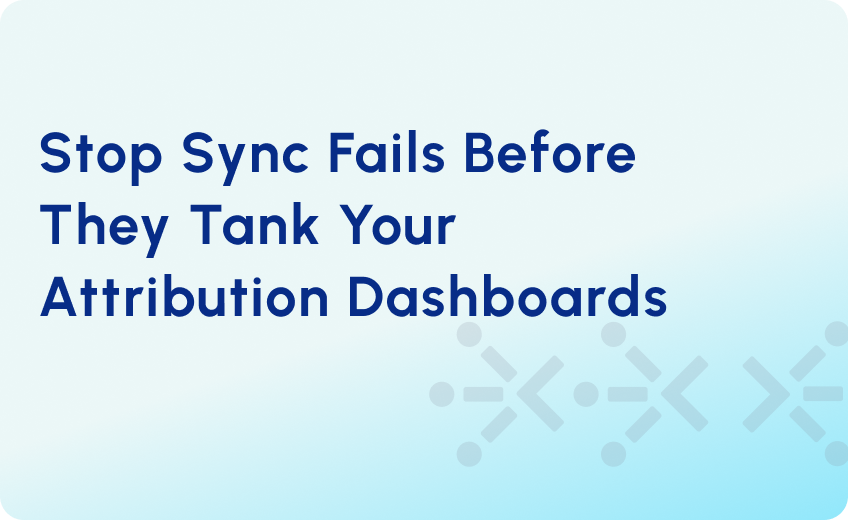
From Silos to Synergy: How to Build a RevOps Team That Drives Growth
At some point in every company’s growth, things stop working the way they used to.
Marketing generates leads, sales chase quotas, and customer success hustles to retain accounts. But results stall. Leads slip. Forecasts miss. The problem isn’t people — it’s how the revenue engine is built.
That’s where Revenue Operations come in.
RevOps brings structure to the chaos. It connects marketing, sales, and CS around shared goals, clean data, and clear processes. But building a high-impact RevOps team isn’t just about hiring ops talent, it’s about designing the function to drive growth.
In this article, we’ll walk through how to structure your RevOps team so it scales with your business and supports your entire GTM strategy.
Understanding the Strategic Role of RevOps
RevOps is more than an operational function; it’s a strategic approach that aligns all revenue-generating teams through shared goals, integrated processes, and unified data. By breaking down silos and fostering collaboration, RevOps enables organizations to:
- Enhance forecasting accuracy
- Improve customer experience
- Accelerate revenue growth
- Increase operational efficiency
The Signs You’re Ready (Or Overdue) for RevOps
Determining the right time to establish a RevOps team depends on your organization’s specific circumstances. However, certain signs indicate that your business could benefit from a dedicated RevOps function:
1. Misaligned GTM Teams
Your marketing team targets mid-market accounts, but sales is focused on enterprise. This misalignment results in wasted leads, confused messaging, and low conversion.
2. Inconsistent Data and Reporting
Your CEO asks for Q3 pipeline velocity. Sales reports one number from CRM, marketing another from marketing systems, and finance yet another from spreadsheets.
3. Inefficient Processes and Tools
You’re using five different tools to track customer journeys, but none of them integrate. Attribution is impossible, and your team wastes hours reconciling data.
4. Unpredictable Revenue Growth
Despite hitting MQL targets in Q1, revenue is flat. Sales didn’t follow up on leads due to unclear handoff processes or poor lead quality.
5. Finance is Constantly “Fixing” Forecasts
Each quarter, the finance team scrambles to reconcile CRM forecasts with real bookings — often adjusting manually due to bad data or pipeline inflation.
What Stage of RevOps Maturity Are You In?
RevOps isn’t something you “turn on.” It’s a progression. As your business scales, your RevOps model should evolve with it. While naming conventions vary, most companies move through three maturity stages:
Stage 1: Developing (Reactive Operations)
This is where most companies begin. Revenue processes are still forming, often buried in spreadsheets or split across disconnected tools. Functional silos are the norm.
RevOps fixes broken handoffs and wrangles data, laying a foundation with CRM integration, lifecycle alignment, and shared KPIs.
Stage 2: Operational (Proactive Alignment)
You have standardized processes, centralized dashboards, and initial RevOps hires. GTM teams align on shared metrics, and decision-making is informed by full-funnel performance. RevOps leads forecasting, campaign planning, and lifecycle oversight.
Stage 3: Strategic (Optimized and Predictive)
At this point, RevOps becomes a strategic growth function. Customer journeys are mapped, insights are predictive, and data flows seamlessly across platforms. The RevOps team isn’t just supporting strategy — they’re shaping it. They identify revenue bottlenecks, model what-if scenarios, and help leadership prioritize investments for maximum impact.
⚠️ Quick Note: Not every business needs to rush to Stage 3. The right maturity level depends on your GTM complexity, data infrastructure, and growth goals. Overbuilding too early can create drag — but under-investing risks revenue leakage. Focus on scaling RevOps in sync with your business.
Core Functions of a RevOps Team
There’s no single org chart, but high-performing RevOps teams usually include:
- Marketing Operations: Manages campaign execution, automation tools, and lead flow. Ensures marketing efforts convert to real pipeline.
- Sales Operations: Owns the CRM, forecasting, pipeline hygiene, and compensation models. Keeps sales efficient and accountable.
- Revenue Enablement: Trains GTM teams, builds playbooks, and supports consistent messaging. Turns strategy into action on the front lines.
- Systems & Data: Maintains the RevTech stack, ensures integrations work, and delivers reporting that actually drives decisions.
- Revenue Finance / GTM Finance: Partners with RevOps on forecast accuracy, scenario planning, and aligning GTM execution with financial planning.
RevOps vs. Functional Ops: Traditional ops teams focus on their individual functions. RevOps unifies them — aligning strategy, data, and process across the entire revenue engine.
Structuring Your RevOps Function
The structure of your RevOps team should align with your organization’s size, complexity, and growth stage. Here are common models:
1. Centralized Model
In this structure, a single RevOps team serves all GTM functions, promoting consistency and collaboration. This model is effective for smaller organizations or those seeking to unify disparate teams.
2. Decentralized Model
Each department maintains its own operations team, with coordination facilitated through regular meetings and shared objectives. This model allows for specialized focus but requires strong communication to prevent silos.
3. Hybrid Model
Combining elements of both centralized and decentralized models, the hybrid approach assigns RevOps professionals to specific departments while maintaining a central team for overarching strategy and data governance.
Regardless of the model, key roles within a RevOps team typically include:
- RevOps Leader: Oversees strategy, alignment, and performance across all revenue functions.
- Sales Operations Manager: Focuses on sales process optimization, forecasting, and CRM management.
- Marketing Operations Manager: Manages marketing automation, lead scoring, and campaign analytics.
- Customer Success Operations Manager: Ensures smooth onboarding, retention strategies, and customer health metrics.
- Data Analyst: Provides insights through data analysis, supporting decision-making across teams.
- Revenue Finance Partner: Aligns financial planning, scenario modeling, and forecast accuracy across the revenue engine.
Implementing RevOps in Your Organization
Establishing a RevOps function requires careful planning and execution. Here are steps to guide the process:
Wrapping Up
Whether you’re solving for misaligned handoffs, inconsistent forecasts, or siloed teams, building a purpose-driven RevOps function is one of the most impactful investments you can make. But getting it right takes more than just hiring a few ops roles. It requires cross-functional design, the right systems, and a clear path to maturity.
That’s where RevOps Global comes in.
We work with scaling organizations to build and optimize RevOps teams. From lifecycle modeling and lead scoring to Salesforce architecture and attribution strategy, we help you turn complexity into clarity and data into decisions.
If you’re ready to build a revenue engine that scales, we’re here to help. Book a 1:1 strategy session today!




